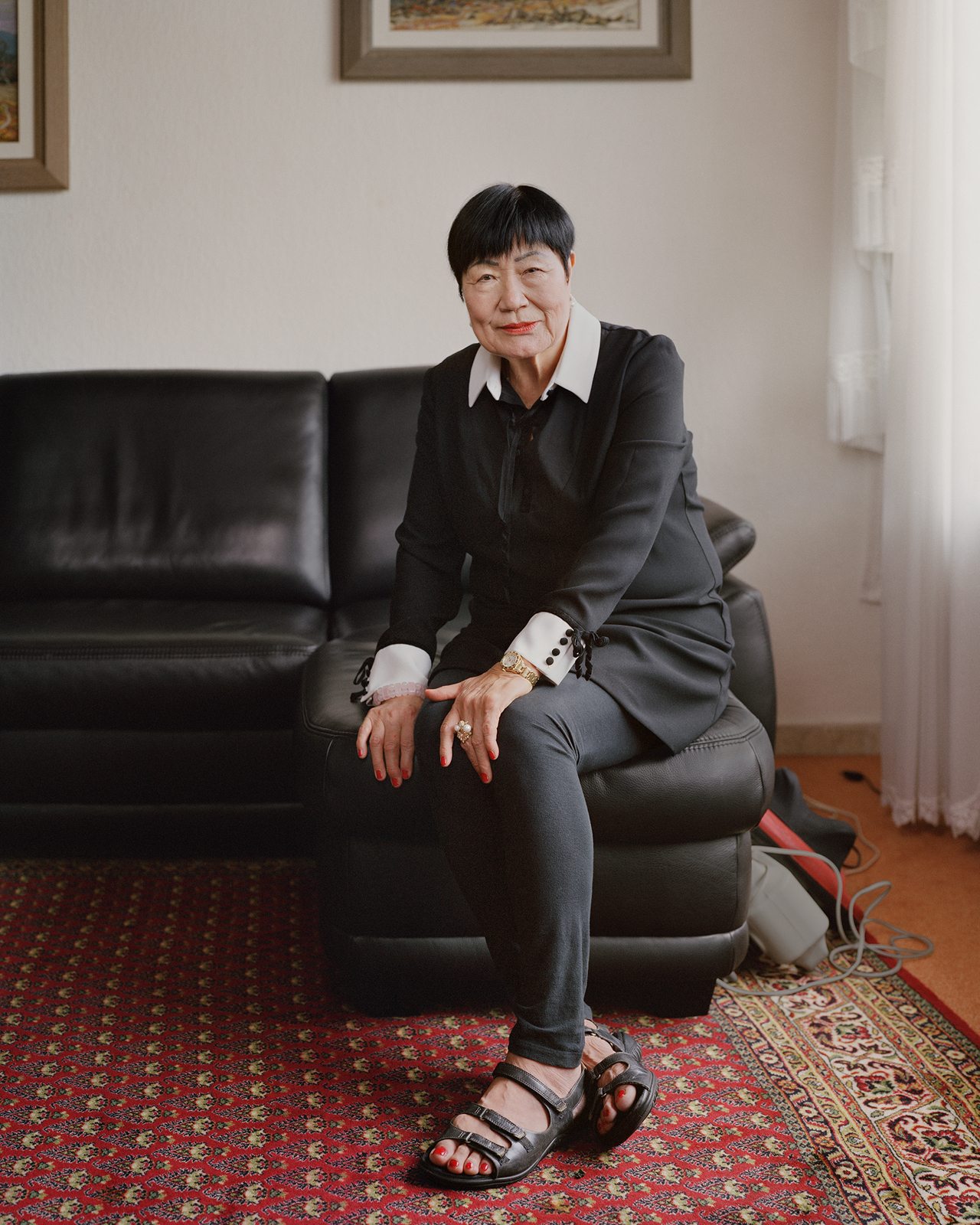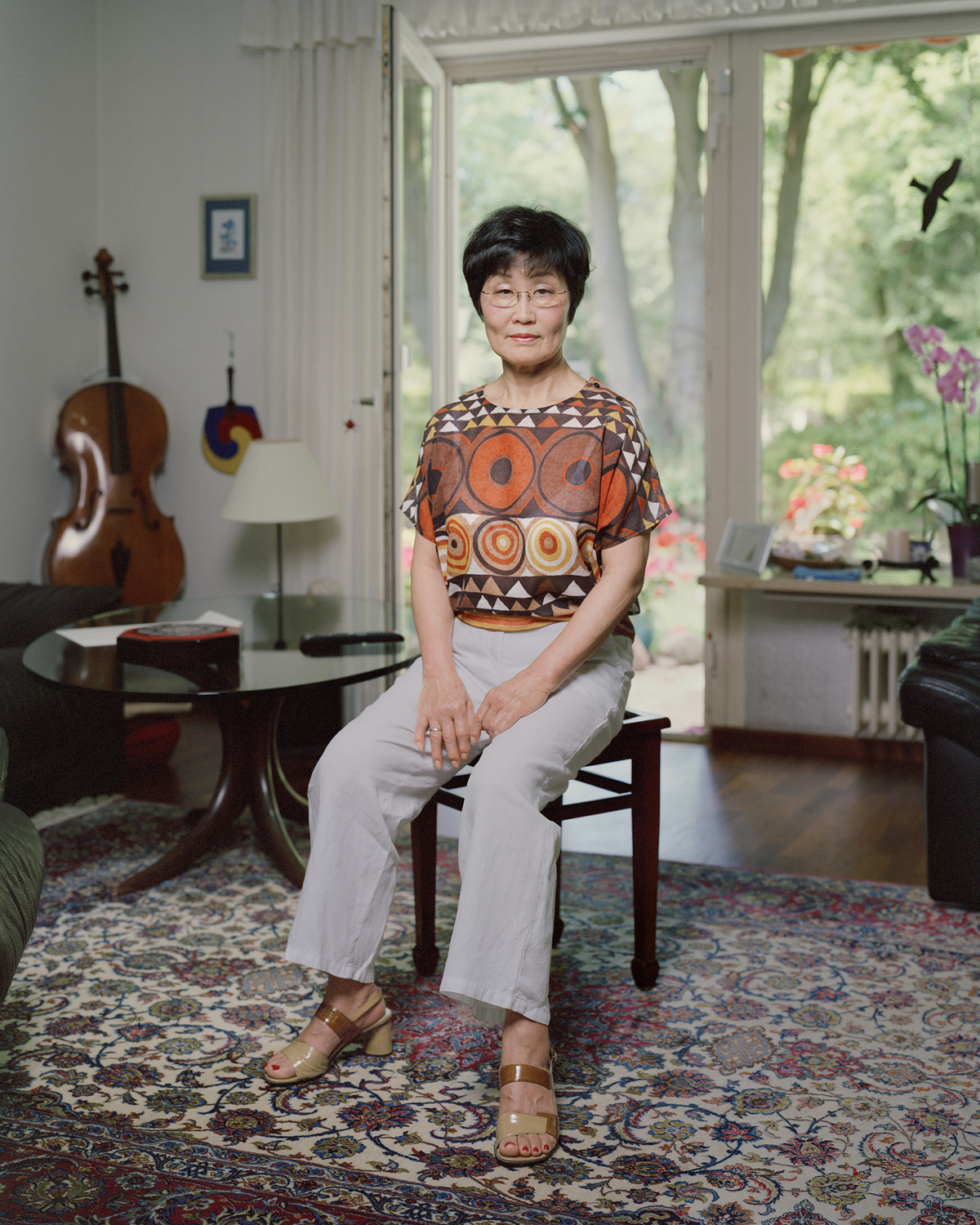‘Berlin Portraits’: Kim Ok-sun spotlights Korean nurses who began new lives in Germany
By Shim Woo-hyunPublished : June 25, 2019 - 18:02
Portraits are not the most favored of items for art collectors. Not many people want strangers’ photos hanging on their walls. But artist Kim Ok-sun continues to take photographs of people because she is drawn to them.
Atelier Hermes in Seoul is holding a solo exhibition of Kim’s works under the title “Berlin Portraits,” featuring some 25 large portraits of Korean nurses who went to work in West Germany in the 1960s and ’70s and settled there, starting new lives.
Atelier Hermes in Seoul is holding a solo exhibition of Kim’s works under the title “Berlin Portraits,” featuring some 25 large portraits of Korean nurses who went to work in West Germany in the 1960s and ’70s and settled there, starting new lives.

The migration started in the 1960s, when West Germany had a shortage of nurses and Korea was looking to alleviate its unemployment problem and earn foreign currency by exporting labor. Through the 1970s, until West Germany changed its policies on foreign labor, about 10,000 Korean nurses are estimated to have been sent there.
Many news outlets at the time reported that the nurses who went to West Germany -- like the Korean miners who migrated there for the same reason -- took pride in sending home foreign currency that would be used to rebuild the country after the devastating 1950-53 Korean War.
“The surprising thing I learned was that many said they had gone to Germany not for the country but for themselves,” Kim said in a phone interview with The Korea Herald.
During the 1960s and 1970s, opportunities to go abroad were rare and it was seen as a chance to start a new life, Kim said in recalling her interviews with the nurses. Circumstances for women in Korea were worse than they are today. Many nurses told her they wanted to see the world beyond where they had grown up, Kim said.
“They had a strong desire to pioneer a new life,” Kim said.

When their employment contracts came to an end, about 40 percent of the nurses decided to return to Korea and some 20 percent moved on to other countries. The rest stayed in Germany and continued their lives there.
Kim’s works are portraits of those who carved out lives for themselves in Germany.
Kim traveled to Germany twice in the last year, where she interviewed about 60 nurses -- most of them now retired -- and took pictures of them in their living rooms.
“I thought I should try to listen to them as much as I could,” Kim said.
Kim’s portraits focus on her subjects, with the background slightly out of focus. The women’s eyes are fixed on the lens, yet they appear natural and confident.
Kim was drawn to work with them not just because they had gone through hardships, but because of the extraordinary lives they had led. As Koreans, they were minorities working in a foreign country. Moreover, they were women.
Throughout her career, Kim has worked with people who lived in places alien to them.
She has captured the lives of immigrants living on Jeju Island, as well as exotic plants that were not indigenous to the land. She has also held an exhibition featuring portraits of multicultural families -- that is, families in which only one spouse is Korean.
Kim chose to focus on those subjects because she shares a similar emotional background.
Kim is married to a foreigner, making her a member of a multicultural family. Since 1995 she has lived on Jeju Island, a location that was unfamiliar to the artist, who originally hails from Seoul.
“After I moved to Jeju, I felt like I had become a stranger. That thought led me to think how much more alienated the foreigners might feel living in Korea. I started my works as a means to console them,” Kim said.
Kim’s well-known 2002 exhibition “Happy Together,” which featured portraits of multicultural families, has come to represent her artistic oeuvre.
“Kim Ok-sun seems to express her deep respect to them and their life by objectively describing the existence of individuals and their genuine life,” curator Kim Yun-kyoung said in the foreword to the exhibition.
By Shim Woo-hyun (ws@heraldcorp.com)







![[KH Explains] How should Korea adjust its trade defenses against Chinese EVs?](http://res.heraldm.com/phpwas/restmb_idxmake.php?idx=644&simg=/content/image/2024/04/15/20240415050562_0.jpg&u=20240415144419)











![[Today’s K-pop] Stray Kids to return soon: report](http://res.heraldm.com/phpwas/restmb_idxmake.php?idx=642&simg=/content/image/2024/04/16/20240416050713_0.jpg&u=)